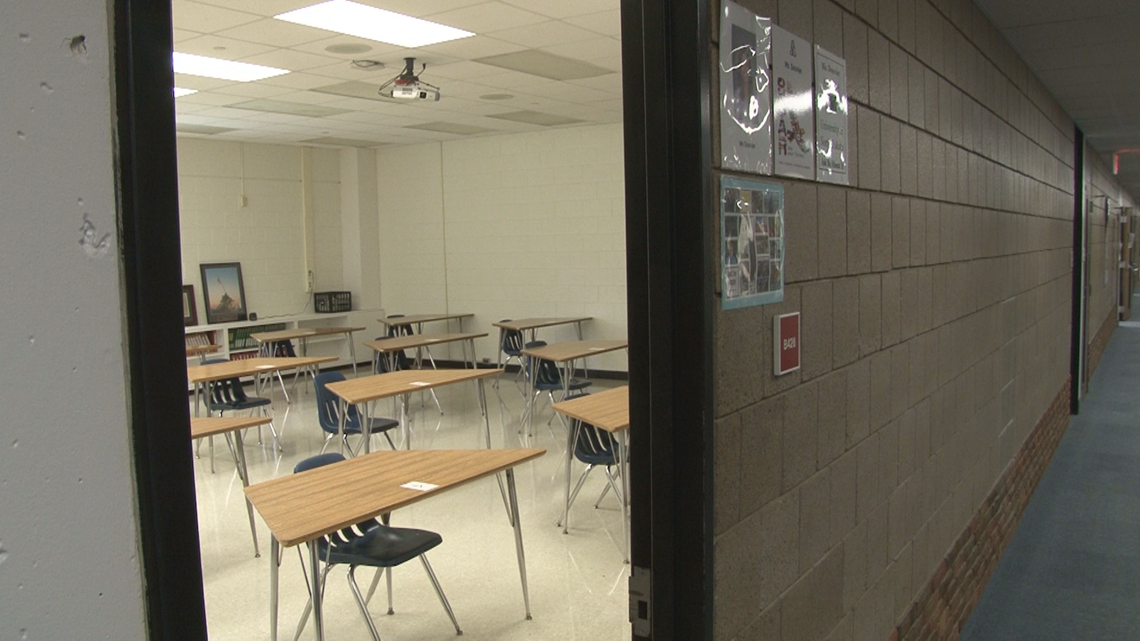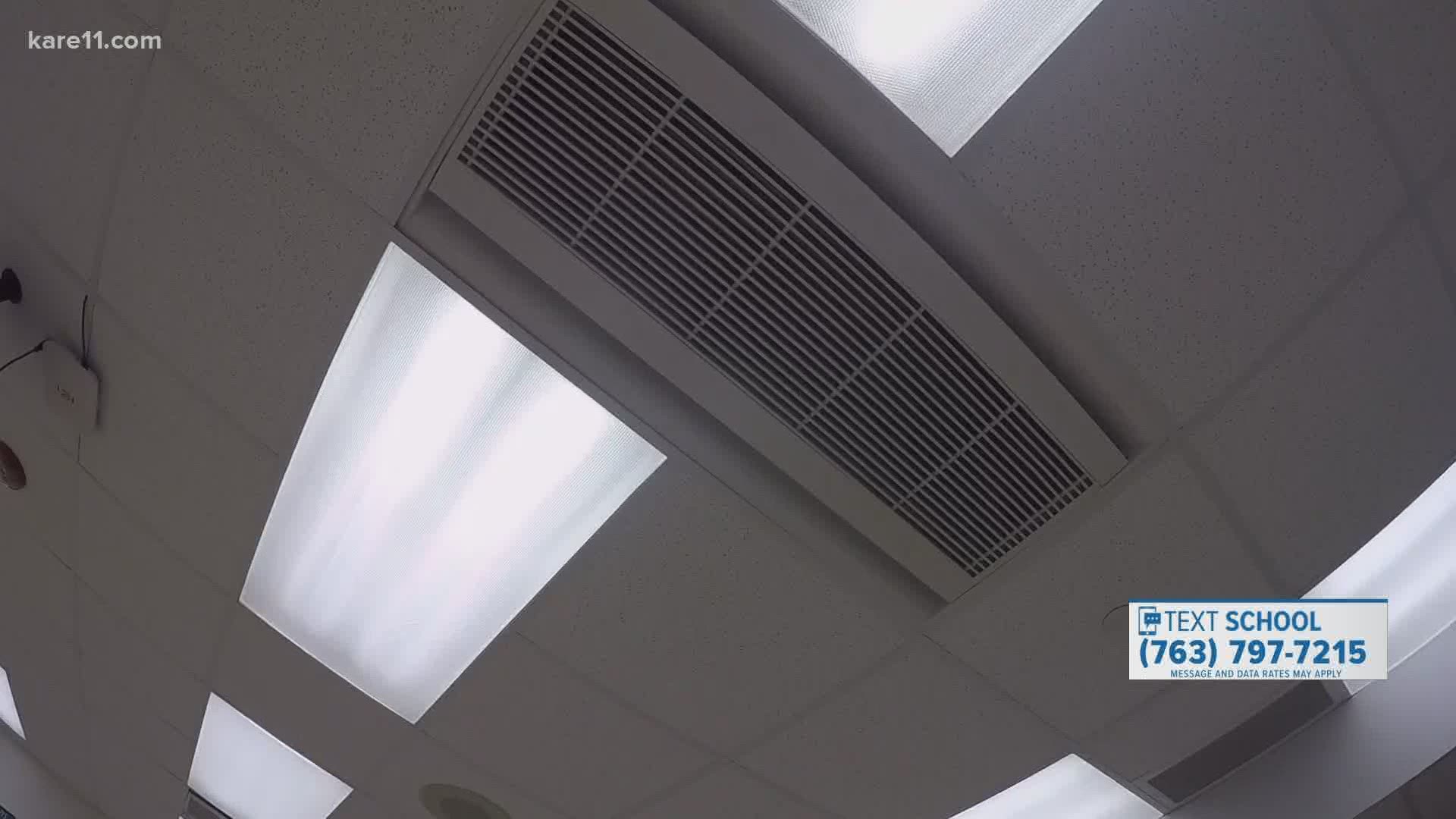ST. CLOUD, Minn. — Before last school year was over, Gary Ganje was already thinking about the year to come.
"We started thinking about it last spring, when we knew we were in distance learning for the remainder of the school year," said Ganje, the Executive Director of Operations for the St. Cloud Area School District.
The district hired JLG Architects and ICS Consulting to help get its buildings ready for students to safely return, should they pursue that option in the fall. The district is now beginning the school year in hybrid learning.
"It's a lot to think about," said David Leapaldt, a principal with JLG. "How do [students] move through the corridors? How do they use lockers?"
JLG walked through all the district's buildings and mapped out classroom configurations with enough space for social distancing. Classrooms now fit approximately 16 to 17 students with numbers on each desk should contact tracing be needed. Some hallways are marked as "one ways" to help direct traffic flow.
"You think about it almost as a traffic plan," Leapaldt said.


But other changes can't be seen.
"Clearly with the pandemic, a lot of focus has been put on ventilation systems," said Pat Overom, a principal with ICS, a consulting company which Overom says is helping about 70 to 80 school districts across Minnesota adjust their infrastructure for in-person learning amid the pandemic.
To keep air clean and reduce the chance of potentially infectious air particles lingering, air is kept moving. Overom says HVAC systems which are normally turned down or off at night are now running at full capacity, 24/7.
"So the more we're running those, the more we're really airing out the buildings and changing the air over each space," he said.
As much outside air as possible is brought into the building without compromising things like temperature.
In each school's care room, where students with COVID-19 symptoms go until they can leave school, there are air filters and the HVAC system is isolated.
"Making sure we're not mixing or cross contaminating any air," Overom said. "We're keeping them under a slight negative pressure. So, we're exhausting a little more than we're bringing in, again keeping that air in one spot and keeping it isolated."

